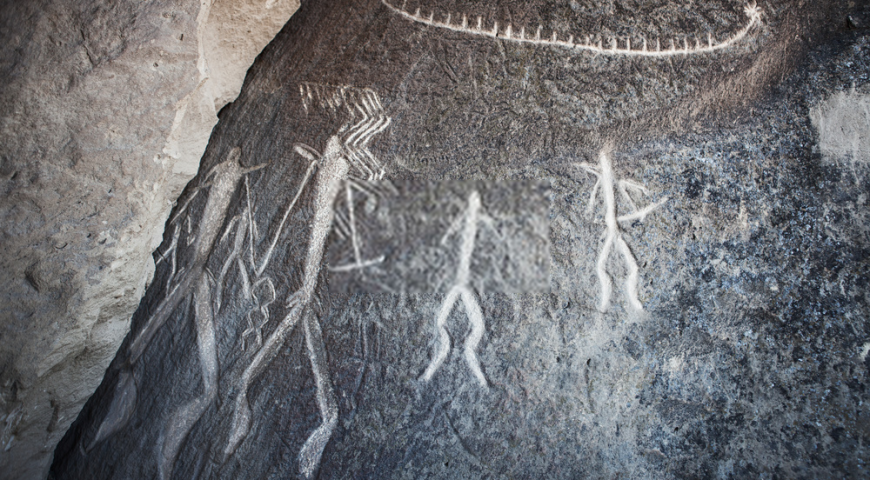
GOBUSTAN
Gobustan State Reserve located west of the settlement of Gobustan, about 40 miles (64 km) southwest of the centre of Baku was established in 1966 when the region was declared as a national historical landmark of Azerbaijan in an attempt to preserve the ancient carvings, mud volcanoes and gas-stones in the region.
Gobustan State Reserve is very rich in archeological monuments, the reserve has more than 6,000 rock carvings, which depict primitive people, animals, battle-pieces, ritual dances, bullfights, boats with armed oarsmen, warriors with lances in their hands, camel caravans, pictures of sun and stars, on the average dating back to 5,000-20,000 years.
Gobustan State Historical and Cultural Reserve acquired national status in 2006. As a part of the 31st Session of the UNESCO World Legacy Committee held in Christchurch, New Zealand on June 23 – July 2, 2007 included within the World Social Legacy List.
Gobustan Petroglyph Museum. The construction of museum was financed by Azerbaijani Ministry of Culture in 2010. The museum was designed and constructed by Latvian “El Studio” Ltd. The museum was opened on 26 December 2011.
The museum’s exhibition hall consists of various sections. The section “Gobustan: UNESCO World Cultural Heritage” provides information about 200 similar monuments around the world. The museum has a 3D cinema hall for 45 seats. It is equipped with 7 sound amplifiers, monitors and projectors. The meeting room has all conditions for holding a variety of conferences, events of national and international importance.
The museum’s permanent exhibition includes 12 rooms which displays and highlights the significance of the history of Gobustan petroglyphs.
The museum received a special European Museum Forum award in 2013.

